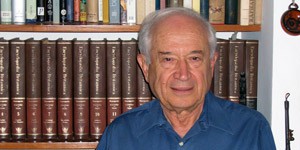Meet the Experts is a series of interviews conducted by experts from the field of Cannabis to world leaders in research and clinical practice of Cannabis as medicine.
Dr. Dustin Sulak is an integrative medicine practitioner with a focus in medical cannabis, osteopathy, and mind-body medicine. He received his undergraduate degrees in nutrition science and biology from Indiana University, a doctorate of osteopathic medicine from the Arizona College of Osteopathic Medicine, and completed an internship at Maine-Dartmouth Family Medicine Residency.

Dr. Sulak’s clinical practice focuses on treating refractory conditions in adults and children with a variety of safe, alternative therapies in an individualized, health-centered approach.
Dr. Sulak is the founder of Integr8 Health, his medical practice with two locations in Maine, USA, where he and his seven medical colleagues treat over 8,000 patients with medical cannabis. Dr. Sulak gives lectures internationally to medical providers and patients on the optimal use of medical cannabis to treat disease and improve health.
Fundación CANNA: Since the endocannabinoid system generally isn't part of the teachings in medical school, how did your interest in cannabis therapeutics begin?
Dustin Sulak: I've known what I was taught about cannabis in school wasn't true since I was 15 years old. I came across, Marijuana Myths, Marijuana Facts by Leslie Iverson when I was in college. My mind was opened to the fact that cannabis was not as bad as people thought, and it also had medical benefits.
There was no mention of cannabis or the endocannabinoid system (ECS) in all of medical school. We had a pharmacology class on dronabinol or marinol once. That was it. In 2004, I went to an osteopathic conference where John McPartland gave a presentation on the anandamide levels before and after osteopathic manipulation. I was fascinated. The word "endocannabinoid" had maybe come across my eyes once or twice. I didn't know much about it. I began a correspondence with John and eventually did a rotation with him my 4th year of medical school.
I started a private practice in 2009 when Maine expanded their medical cannabis law. Chronic pain became an indication, with several other new conditions. I certified one or two people for cannabis, and suddenly there were thousands trying to see me all at once. I had an incredible diversity of pathology that you wouldn't see in a general rural practice setting. I learned quickly. I tried to listen to my patients and then correlate what they said with some of the literature. I had a lot of support from John McPartland and later Ethan Russo. The level mentorship from both of them is something I am so grateful for.
Cannabis took over my career. I went from a micropractice, to having two locations with 8-10 different providers and 6,000 patients. It all happened in less than two years.
FC: Speaking of osteopathy, how does cannabinoid medicine aid in adjusting structural alignment within the body?
DS: A principle of osteopathic medicine and other holistic modalities is in order for something to change, there has to be a disengagement. If you are driving a manual car, you have to go into neutral before you can go to another gear. We can find things that are out of place in the body and can push them around. But that doesn't change the pattern of function. If we shift the position of the forces that created a situation to begin with, everything will eventually return to its dysfunctional state.
The foundations of osteopathic medicine look at changing function. Whenever that process becomes exaggerated or excessive, there is always a corrective force that brings it back into balance. There is something special that happens when we try and approach change. Healing is change. The ECS is a homeostatic regulator within the body, and it usually does so through negative feedback. This is how equilibrium happens on a physiological level.
People that do yoga understand the benefit of doing corpse pose, because it helps them get to neutral before stretching. People notice they can go into poses more deeply when they have cannabis on board. Also, the herb is helpful for pain management. There are two types of pain. One that is normal that tells you "slow down and be present", and the second is a result from injury. And both can be decreased by cannabis. Cannabis allows us to face the discomfort that can accompany stretching, exercise, or bodywork.
FC: What are some manners to balance endocannabinoid tone aside from using cannabis?
DS: Anyone striving for better health is likely doing things that balance the ECS whether we're aware of it or not. Anything that helps someone relax and improves neurotrophic flow can help balance endocannabinoid tone. Exercise is a great way to increase endocannabinoid production, as well as various forms of body work. Studies have shown that osteopathic manipulations and electro acupuncture boost endocannabinoid levels after a treatment.
Exercise should relieve stress, but it has to be enjoyable. If you force yourself to go to the gym and hate it, it's going to be perceived as a stress signal by the body. Your level of cortisol will increase, which will raise blood sugar and blood pressure. So I encourage people to find activities that they truly enjoy.
There are dietary approaches as well. Endocannabinoids are primarily derived from Omega 6 fatty acids, including anandamide and 2-AG. There is a whole set of Omega 3 based endocannabinoids, which have analgesic effects and other benefits. Increasing one's level of Omega 3 can reduce heart disease, depression, bipolar disorder, and improve epilepsy. Sardines, herring, mackerel, small cold water fish are great sources of Omega 3's. Hemp, chia, and flax seeds are good vegetarian options. Substances that have overall tonic qualities seem to have an endocannabinoid component. Maca, chocolate, and turmeric are some examples. There is evidence that turmeric can increase endocannabinoid receptor levels in some tissues.
Good rest and meditation can also activate the ECS. Many of my patients are able to achieve a cannabis state of consciousness with yoga or meditation alone. They have found the switches to flip in their inner pharmacy to give them the desired effect without cannabis.
FC: What are some ways that cannabis could be a potential solution for the opioid epidemic?
DS: There are many ways cannabinoids and opioids interact with one another. When I was in the family medicine residency clinic, I had many chronic pain patients. They were prescribed opiates and they came back saying, "These pills aren't working anymore, I need something else". It was a tough situation. Doctors generally don't have anything else to give them, except more opioids. More opioids may help them temporarily, but in the end it makes their pain worse and causes other side effects. But there were a handful of patients who didn't need more opiates. They were stable on low doses for pain management. I noticed these outliers and asked what they were doing. They told me they were combining the opioids with cannabis. That's when my interest in this topic began.
Cannabis makes opioids stronger, a phenomenon called the "potentiation of opioid analgesia". A review came out last year that summarized all the preclinical studies and found that adding THC to morphine makes the effective dose 3.5 times lower. The same review article showed that codeine was over 9x more stronger when THC was added, meaning you have to use less. This mirrors what I see in the clinic.
Opioids typically have a narrow therapeutic index. A therapeutic index is the space between the dose that would help someone and that which would cause mortality. Any time we can widen the therapeutic window of substance, it becomes safer. When we add cannabis to an opioid, the effective dose goes down, but the lethal dose doesn't change. This helps people decrease their opiate consumption.
Retention of efficacy is the next component. This has only been clearly proven in animal literature, but there is some evidence in humans. We expect opioids to lose their efficacy over time. In some preclinical studies, animals have built more opiate receptors when using THC and opioid together, instead of losing them. When THC is present, it seems like the effectiveness of opiates can last longer.
Additionally, cannabis happens to be perfect for all the symptoms of opioid withdrawal. People that are tapering off can have muscle spasms, nausea, vomiting, diarrhea, twitching, shaking, sweating, running nose, watery eyes, and sleep issues. Cannabis slows all of these symptoms down.
Cannabis seems to be a good harm reduction substance. If someone is an addict, they are used to pleasure seeking behavior. It is typically not effective to ask them to stop. Many people need another type of pleasure replacement in their life, and cannabis can provide that. It can do much of what opiates can for decreasing physical pain. Often times there is a major overlap with PTSD and chronic pain for those who are prescribed opiates. Cannabis treats both those issues and also helps people sleep. Sleep is a key component for recovery and healing. Cannabis can reduce anxiety, which is often a driving force behind relapse.
Education is the #1 strategy for making things better. Medical professionals need information on how they may choose cannabinoid medications instead of opiates for pain management. The scientific foundation for using cannabis to treat chronic pain is 100% solid. This should be the strategy. Doctors should ask patients, "Are you using cannabis?" not in a judgemental way, but with curiosity on how it could help them. People are already using cannabis and opiates together. We need to teach them how to do so appropriately.
FC: Can you discuss the practice of microdosing cannabis (using small amounts) for therapeutic effect?
DS: People can get the medical benefits of cannabis without any type of impairment, even when they are using THC dominant products. Small doses can give patients relief from nausea, pain, or anxiety. Oral mucosal dosing or CBD products make it easy to have symptom relief without unwanted psychoactive effects.
Cannabis has an incredibly wide dosing range that's safe. However, I noticed a trend. The patients who used less cannabis seemed healthier to me. As their situation improved, they ended up needing to use it less. When an individual uses more than a "threshold of dose" of cannabis, they start to develop a tolerance, in particular to THC. The tolerance causes the efficacy of the treatment to diminish over time. This is opposed to those at or below the threshold dose. They can maintain a retention of efficacy and continue to get benefit from cannabis for years without ever building tolerance.
Microdosing may give someone who is sick a reduction in their symptoms. For healthy people, it may increase their resilience to stress. They are able to work better or have improved athletic performance. There is evidence that low doses of THC can increase endocannabinoid tone and enhance the number of receptors in the body. Low doses of CBD can do the same thing.
FC: Can you talk a bit about the use of cannabinoids in their acid (raw) form, like THC-A and CBD-A? What kinds of ailments do they seem to be helpful for?
DS: It took me by surprise in my clinical practice when people accidentally took THCA and had some incredible results. First, it was for seizures, which continues to be the strongest reports I am getting. Seizure patients who are unresponsive to CBD, or whose situation is exacerbated by it, have improved with tiny doses of THCA. I don't have much experience using THCA in higher doses, because we often get great results on with small amounts. We've had a few cases of severe migraine patients who have responded well to low doses of THCA, too. And there is a strong basis for pain. In preclinical literature, there isn't much about THCA and pain, but there is on inflammation. And inflammation is often the driving force behind chronic pain.
I most often recommend THCA for migraines, pain, and seizures because that's the experience I have now. However, I'd try it with any neurological condition. It seems to be a broadly acting neurological tonic. I think a lot of what we attribute to THC in herbal cannabis could be in part an effect of THCA. THCA is interesting because it does not affect CB1 or CB2 receptors.
I have less experience with CBDA. CBDA has some overlap with CBD. Both are active at the serotonin receptor, which is presumed to be the root of its anti-nausea mechanism of action. I've had autism patients respond well to it. Some of their self inflicted injury behavior can diminish with the use of CBDA. For cancer, there seems to be stronger antitumoral effects when THCA and CBDA are added to the neutral cannabinoids. There's some preclinical and historical basis for that as well.
Acidic cannabinoids are a whole new world that we've only scratched the surface of. They seem beneficial in tiny doses. Less than 1 mg can be enough for someone to get a benefit. I suspect that they may be useful at high amounts too. When they become more widely available, I'm interested in learning more about it. My experience with high dose acidic cannabinoids comes mostly from people who are juicing or making pesto. Cannabis pesto is probably the best way to do this. A teaspoon of it would be a very high dose of acidic cannabinoids.
FC: How has your practice changed since Maine went from a medical to a recreational state?
DS: My colleagues all over the country are finding the same thing. In my practice, the people using cannabis for years, with the ability to grow their own, don't feel the need to see me anymore. We had a 40% decrease in our overall volume of patients. When cannabis became legal in the whole state, those who were on the fence before now feel that medical is a reasonable choice for them. A lot of sick people who are new to cannabis and are finding the courage to come and give it a try. We see about 40 new patients a week in my clinics who are over 60 years old. It's a rewarding patient population with a lot of complex cases. It's funny how legalization can soften the biases towards cannabis to the point where there is a whole new population of people who are willing to try medical. I am also seeing a steady shift as the medical community is more likely to send referrals. Also, employers and the human resource community is becoming more accepting of medical cannabis use.
FC: Thank you for your insight, Dustin.


